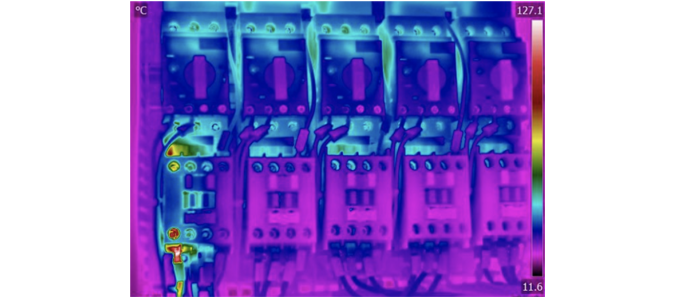- +61 7 3374 2877
- Email Us
You will have seen it in many, if not most reports, a statement under the analysis comment: “Loose connection”. However, often the reality is that it is not just a loose connection.
What we can say, with great surety, is that when we find a warmer part of an electrical component, we are dealing with higher resistance with some current going through it. Most of these thermal anomalies will therefore be a high resistance connection or contact.

At a survey recently we found this thermal anomaly on the left phase load side of a contactor.
We measured 150°C at the connection at the bottom, and 102°C at the same phase at the top of the contactor. All the other connections were found to be around 37°C.
Usually the hottest pixel shows the point of fault, the site where the resistance is located. In this case that would be the bottom cable terminal and cable connection. So, the analysis might say “just a loose connection” and the usual recommended action would be to tighten the connection and monitor for a temperature change.
However, we needed to ensure there was no damage to the visible parts which had been affected by the high temperature and of course the cable insulation was compromised, and probably also the small lug which the cable strands had been crimped into.
Importantly, in addition, we cannot rule out the possibility of higher resistance at the contact internally to the contactor.
When it came to the recommendation the following was stated: “Check for damage and internal fault. Replace the contactor if necessary and cut back/reterminate ensuring clean and tight terminal connections.”

At the following survey, the contactor had been replaced, and the temperature had come down to normal. Fortunately, the person who replaced the item, left the “old one” behind, so we could attempt to find some “forensic evidence” on the body. Already the outside of the body revealed something:
The charred pattern on the side of the contactor, is an indicator of where the hottest point has been internally.
Splitting mechanical systems is always fun. In this case the contactor could be taken apart quite nicely, and when the contact points were investigated, the point at the hot connection could be seen to have totally vanished from the moveable contact part (bottom left contacts in the image above). The other 3 phase used contacts did not look too healthy either.
So, in this case NOT JUST A LOOSE CONNECTION.